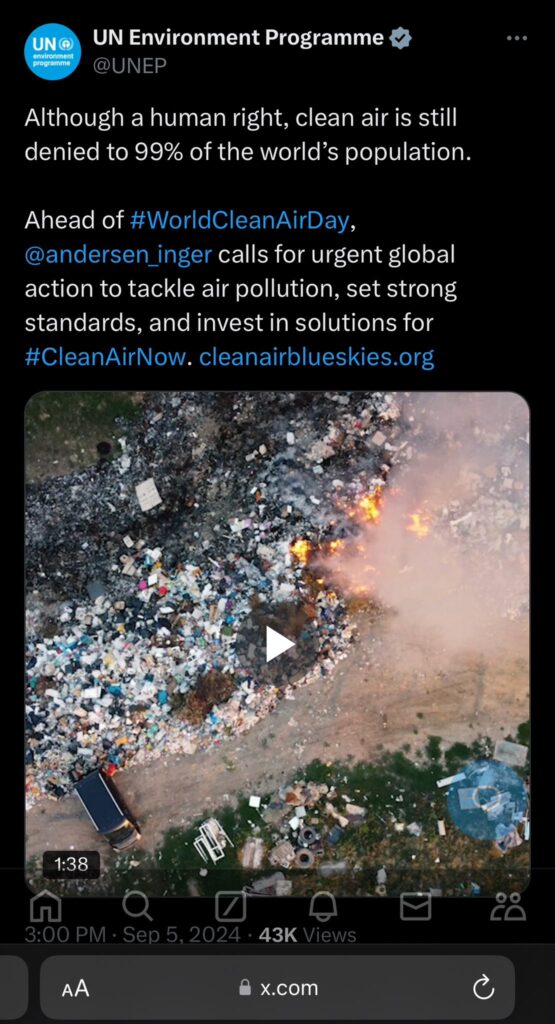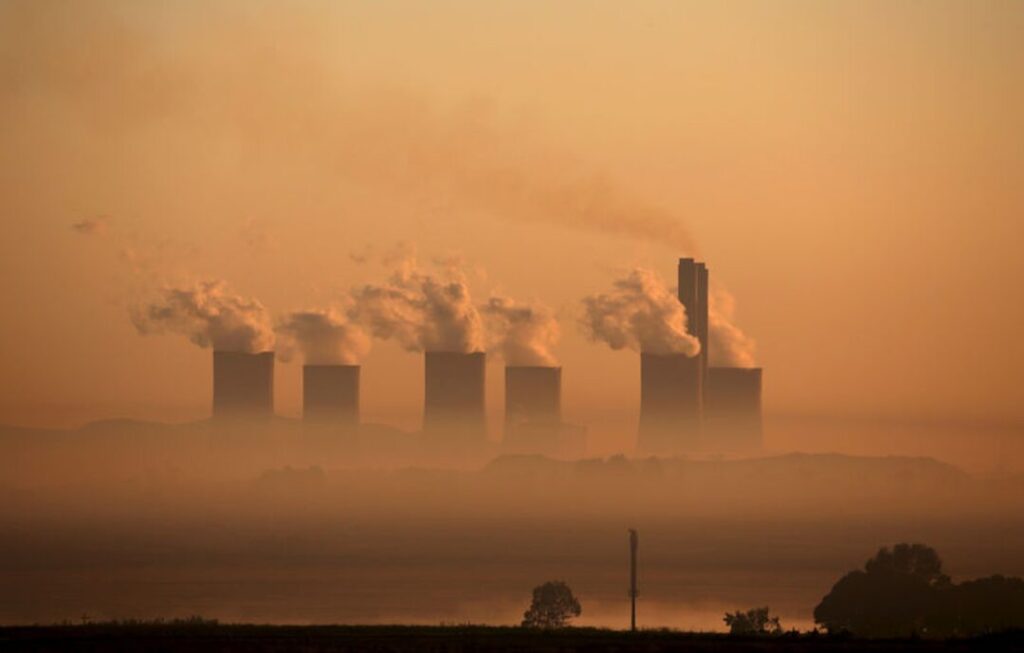Earlier this month on September 7th, the world marked the fifth annual International Day of Clean Air for Blue Skies, with urgent calls for increased investment in clean air solutions. The orange haze enveloping Johannesburg has become a growing public health concern in South Africa.
Launched by the United Nations General Assembly in 2019, the International Day of Clean Air for Blue Skies highlights the global fight against air pollution. Since its inception, the day has focused on different themes each year, underscoring the harmful effects of air pollution on health, environment, and economies worldwide.
Air quality has emerged as one of the most critical public health challenges both in Africa and globally. Statistics underscore the magnitude of the crisis: a staggering 99% of the global population breathes polluted air, contributing to around 8.1 million deaths in 2021 alone. Most of these fatalities are linked to non-communicable diseases, underscoring the urgent need for cleaner air. Poor air quality claims more lives globally each year than HIV, tuberculosis, and malaria combined.
Dr. Maria Neira, Director of the Department of Environment, Climate Change, and Health at the World Health Organization (WHO), emphasized the pervasive and deadly nature of air pollution. “Air pollution is a silent killer that affects us all, no matter where we live,” said Dr. Neira. “Its health impacts are severe and far-reaching, especially for vulnerable populations such as children and the elderly.”

While the dangers of poor air quality are well-known, the cost of establishing regular monitoring stations has long been a barrier. However, advancements in artificial intelligence (AI) are changing the landscape. Researchers are improving the accuracy of air pollution measurements through AI-driven systems. “We are focusing on high-risk areas and placing sensors primarily in schools and hospitals,” said Lotta Mayana, Director of Environmental Studies at the University of Witwatersrand. “We’ve developed a cost-effective air quality monitoring system using sensors, internet of Things, and AI.”
Every five seconds, these sensors transmit data to a laboratory, where AI processes the information. Through machine learning, the system uses historical data to predict future pollution patterns. It then identifies specific areas of concern within cities or neighborhoods.
Currently, South Africa has only 130 large air quality monitoring stations, each limited to measuring air quality within its immediate vicinity. A team of 25 experts, including particle physicists with over 20 years of experience working with sensors, communications and AI, plans to deploy ten of thousands of sensors across South Africa.

Particle physics, a field that blends electrical and information engineering, data science, and AI, has been instrumental in creating complex systems to tackle air quality challenges.
Governments around the world are also stepping up their efforts to combat air pollution through ambitious policies and practical solutions. The European Union aims to reduce premature deaths caused by particulate matter by 2025, backed by strict regulations targeting harmful pollutants. In London, the expanded Ultra-Low Emissions Zone, now the world’s largest, offers financial incentives to retire non-compliant vehicles, representing an innovative approach to cleaner air.
In the United States, worsening air quality serves as a stark reminder of the intersection between industrial activity, urban development, and public health. Numerous federal, state, and local agencies are recognizing the urgency of the issue, with various air quality initiatives and programs already in place, and more expected as the government ramps up its efforts.
While such measures are impactful, they represent just a fraction of the global response needed to address this crisis, as highlighted by Dr. Inger Andersen, Executive Director of the United Nations Environmental Program. “Air pollution knows no borders,” Dr. Andersen stated. “We need stronger partnerships across sectors and nations to implement effective solutions. This includes accelerating the shift to renewable energy, improving urban planning, and promoting sustainable transport systems.”
The international Day of Clean Air for Blue Skies serves to unite these efforts, encouraging global participation and dialogue in the fight against air pollution.

